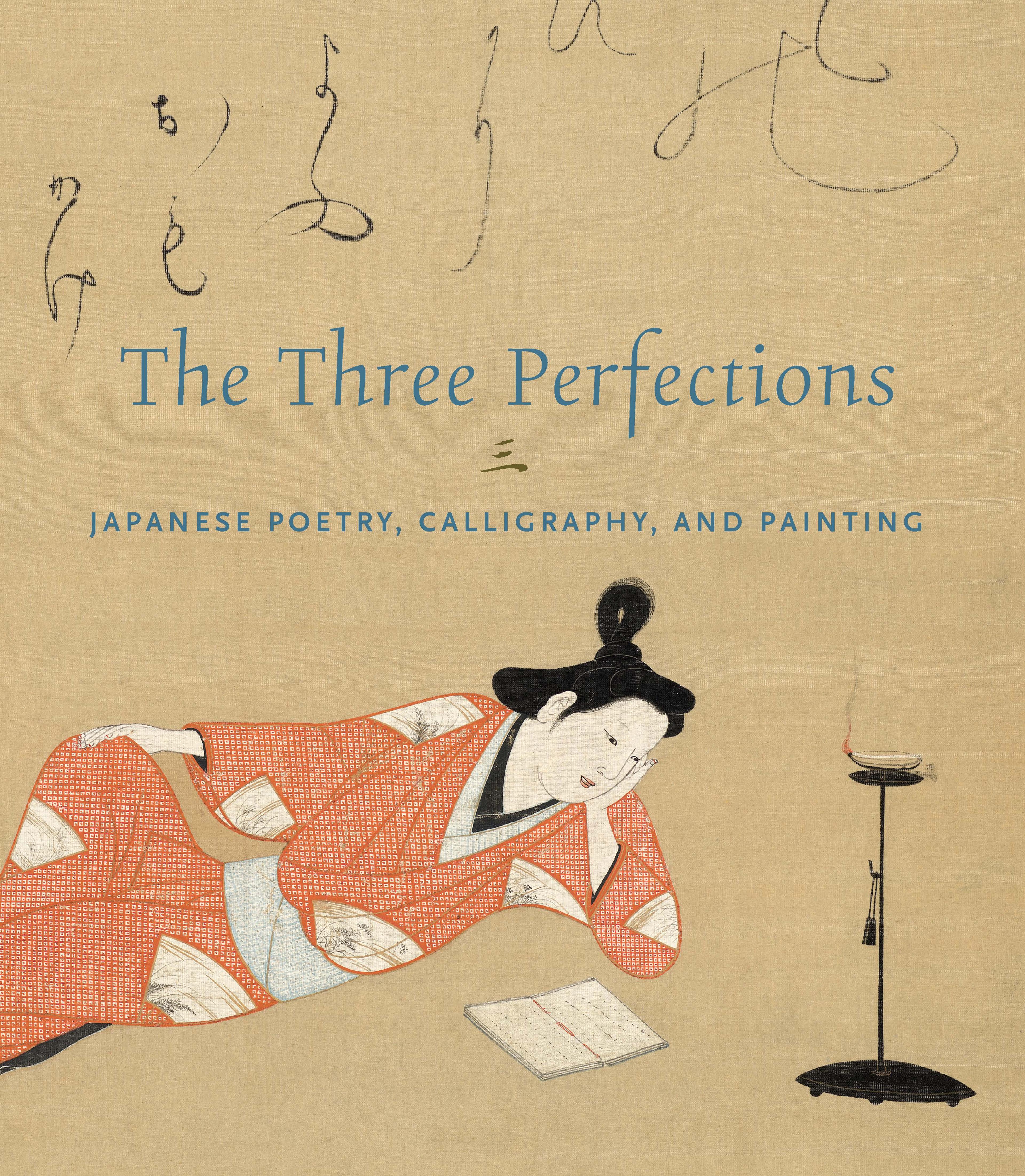The Thirty-Six Poetic Immortals
This pair of screens portraying the Thirty-Six Poetic Immortals is one of the earliest and finest surviving examples of the subject in the full-size folding-screen format. In compiling his roster of thirty-six eminent Japanese poets, the courtier-poet Fujiwara no Kintō (966–1041) sought to identify those who had been the most esteemed in the composition of waka, or court poetry. Two were famous monks, five were court ladies, and the rest were men of the court.
The leftmost poem on the right-hand screen is by Kakinomoto no Hitomaro (ca. 660–724):
ほのぼのと あかしのうらの 朝霧に
しまがくれゆく 船をしぞおもふ
Dimly, dimly
through the morning mist
across the bay of Akashi,
my thoughts follow the boat
now hidden beyond the islands.
The rightmost poem on the left-hand screen is by Ki no Tsurayuki (872–945):
桜ちる 木のしたかせは 寒からて
空にしられぬ 雪ぞふりけり
Cherry blossoms scatter
in the breezes not chilly,
a type of snow flurries
unknown to the heavens
continue to fall.
The leftmost poem on the right-hand screen is by Kakinomoto no Hitomaro (ca. 660–724):
ほのぼのと あかしのうらの 朝霧に
しまがくれゆく 船をしぞおもふ
Dimly, dimly
through the morning mist
across the bay of Akashi,
my thoughts follow the boat
now hidden beyond the islands.
The rightmost poem on the left-hand screen is by Ki no Tsurayuki (872–945):
桜ちる 木のしたかせは 寒からて
空にしられぬ 雪ぞふりけり
Cherry blossoms scatter
in the breezes not chilly,
a type of snow flurries
unknown to the heavens
continue to fall.
Artwork Details
- 近衛信尹書 狩野孝信工房作 三十六歌仙図屏風
- Title: The Thirty-Six Poetic Immortals
- Artist: Painting by Studio of Kano Takanobu (Japanese, 1571–1618)
- Artist: Inscriptions by Konoe Nobutada (Japanese, 1565–1614)
- Period: Momoyama period (1573–1615)
- Date: early 17th century
- Culture: Japan
- Medium: Pair of six-panel folding screens; ink, color, gold, and silver on paper
- Dimensions: Image (each): 65 1/8 in. × 11 ft. 10 in. (165.4 × 360.7 cm)
Overall (each): 72 in. × 12 ft. 2 1/2 in. (182.9 × 372.1 cm) - Classification: Screens
- Credit Line: Purchase, Mary and Cheney Cowles Gift, 2024
- Object Number: 2024.279.1, .2
- Curatorial Department: Asian Art
More Artwork
Research Resources
The Met provides unparalleled resources for research and welcomes an international community of students and scholars. The Met's Open Access API is where creators and researchers can connect to the The Met collection. Open Access data and public domain images are available for unrestricted commercial and noncommercial use without permission or fee.
To request images under copyright and other restrictions, please use this Image Request form.
Feedback
We continue to research and examine historical and cultural context for objects in The Met collection. If you have comments or questions about this object record, please contact us using the form below. The Museum looks forward to receiving your comments.
